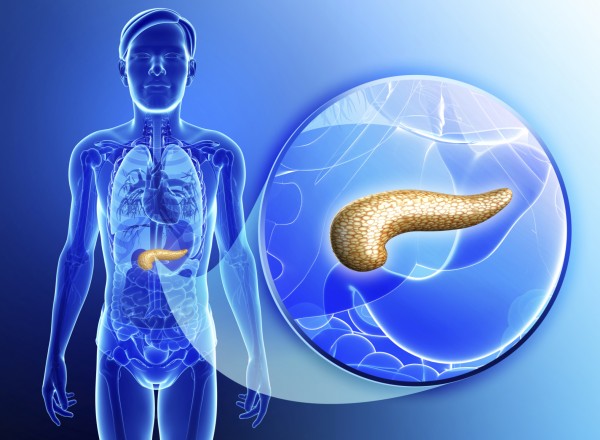In science and in medicine, there are times when what you discover isn't exactly what you set out to find. It's how we stumbled upon things like X-rays, the pacemaker and even Viagra.

Nick Giannoukakis, PhD, visiting associate professor of biological sciences, Carnegie Mellon University; member of the Allegheny Health Network Institute of Cellular Therapeutics; and principal investigator/lead of the Type 2 Diabetes Clinical Trial
A team of Pittsburgh researchers, led by Allegheny Health Network's Nick Giannoukakis, PhD, hopes to follow a similar path — to an extent — to see if a drug originally developed to treat COPD, a form of lung disease, can change the way we treat type 2 diabetes.
"We hope that this drug will at least help to enhance the effects of other drugs that people with diabetes are on, so that they can work a lot better, as a first approach," says Dr. Giannoukakis. "And, over time, if clinical studies prove that it is helpful and beneficial, we may begin pulling the other medications off one by one. We could just put the patient on this one alone at the beginning of type 2 diabetes and possibly during the phase of prediabetes. If diet and exercise do not work, then potentially this drug can be something that can help them to at least delay if not completely avoid the onset of type 2 diabetes."
After research showed that the drug originally developed to treat COPD worked to reduce inflammation and acted on a pressure point that was shown in other studies to increase the system's response to insulin in mice, Dr. Giannoukakis applied to the National Institues of Health's (NIH) National Center for Advancing Translational Sciences (NCATS) to fund a two-year, $2.2 million study in humans. Now that the study has approval from the NIH, AstraZeneca (the original manufacturer of the drug), the Food and Drug Administration and the Allegheny Health Network Institutional Review Board, it's ready to recruit participants for a clinical trial.
"We're looking for patients who are overweight and have type 2 diabetes; typically, these patients are resistant to the insulin that their bodies produce naturally" Dr. Giannoukakis says. "For the moment, patients who have diabetic complications like significant heart, kidney and nerve disease won't be eligible to enroll in the study."

Clinical trials are research studies that test whether a particular treatment is safe and effective in humans. This study is designed as a crossover trial (see sidebar), which means all participants will receive the drug for a six-month period at some point during the study.
People volunteer to participate in clinical trials for a variety of reasons, including the opportunity to help others with similar medical conditions, getting access to the newest treatments before they're widely available, and playing an important role in the discovery of new medical treatments.
Dr. Giannoukakis, who was associate professor of pathology and immunology at the University of Pittsburgh School of Medicine prior to being recruited to the Allegheny Health Network as part of the internationally-renowned team led by Dr. Massimo Trucco, the director of the Institute of Cellular Therapeutics, lights up with infectious enthusiasm when he talks about the processes within our cells that lead to type 2 diabetes — and how the drug being studied can disrupt them.
It all traces back to people consuming more energy, in the form of calories, than their bodies can use. Our fat cells grow, lowering the ability of insulin to enforce the absorption of sugar (glucose) in the blood by the body. The resulting higher blood sugar along with the expanding fat mass triggers the immune system to send white blood cells to combat what it sees as an abnormal condition.
"When white blood cells are called in large numbers to a tissue — in this case, growing fat in and around the parts of the body that respond to the glucose-lowering actions of insulin — they create inflammation, just like the inflammation we might see when we fall off a bicycle and scrape our arm, when we have a burning sensation and it gets red," Dr. Giannoukakis explains. "That's exactly what happens inside the fat and the parts of the body where it is growing. The white blood cells are also producing chemicals that shut down the ability of the fat cells and the other cells that they surround to be able to respond to insulin, and sugar is not pulled in."
At the same time, white blood cells are attracted to the pancreas — where the special cells that make the body’s supply of insulin are located.

The pancreas is about six inches long and sits across the back of the abdomen, behind the stomach.
"The pancreas is already being overworked because it has to supply more insulin to an insensitive state [the fat and muscle cells that aren't responding to insulin], and the fact that it's putting out a lot of insulin, well, that's an abnormal situation," Dr. Giannoukakis says. "Our white blood cells recognize that and they go into the pancreas and try to correct it. In the process, they're actually doing more damage. They shut down the ability of the insulin-producing cells to make insulin."
With little or a lot less insulin in the system and our other cells becoming numb to its effects, blood sugar rises. That's how you develop type 2 diabetes over time.
The substance made by a specific type of white blood cells (neutrophils) that is critical in creating the insulin insensitivity and impairment in the pancreas is a protein called neutrophil elastase.
"Think of it as an axe which is being used to destroy a picket fence (with elastin acting as the pickets) by somebody (the neutrophils and other white blood cells) who wants to get into your house to try to help you. But in the process, that person not only destroys the pickets, but damages a big part of your house as well," illustrates Dr. Giannoukakis. "The neutrophil elastase chops down that picket fence, allowing more white blood cells to rush in — fueling the inflammation. By neutralizing the neutrophil elastase, you prevent the picket fence from being destroyed, and you prevent the neutrophils from acting — you're shutting them down."
Counteracting those proteins reverses the chain reaction that allows type 2 diabetes to develop, which gives the pancreas a chance to produce insulin again and gives other diabetes medications a better chance to work.
If this clinical study indicates that the COPD drug can reduce inflammation and delay or prevent the onset of type 2 diabetes, Dr. Giannoukakis has high hopes it will also be effective in treating other conditions where inflammation plays a central role.
If the drug works as expected, for example, it may be useful for patients diagnosed with rheumatoid arthritis. On its own, the drug could keep that condition from becoming more severe. It may also allow patients to take lower doses of other arthritis medications, some of which are associated with uncomfortable side effects.
"At this moment, we are also working to identify the effects of this drug in type 1 diabetes, also referred to as juvenile diabetes, to prevent the onset of the disease by shutting down the neutrophils and shutting down their ability to infiltrate the pancreas and to destroy the cells that make insulin," Dr. Giannoukakis says.
"Although the end result is very high blood sugar, type 1 diabetes is actually more complicated in that the immune system specifically rejects the pancreatic cells that make insulin very early in life. Unlike type 2 diabetes, where there are treatment options, a life-long commitment to insulin injections is the only choice. So we are very focused on using this drug alone, or with other innovative therapies, to shut down the neutrophils. This should hopefully protect the people at high risk from developing type 1 diabetes for a long time; hopefully forever."